Search Result
Results for "
intravenous
" in MedChemExpress (MCE) Product Catalog:
2
Biochemical Assay Reagents
| Cat. No. |
Product Name |
Target |
Research Areas |
Chemical Structure |
-
- HY-117979
-
|
Alfadolone
|
Others
|
Cancer
|
|
Alphadolone is an intravenous anaesthetics. Alphadolone causes general anaesthesia .
|
-
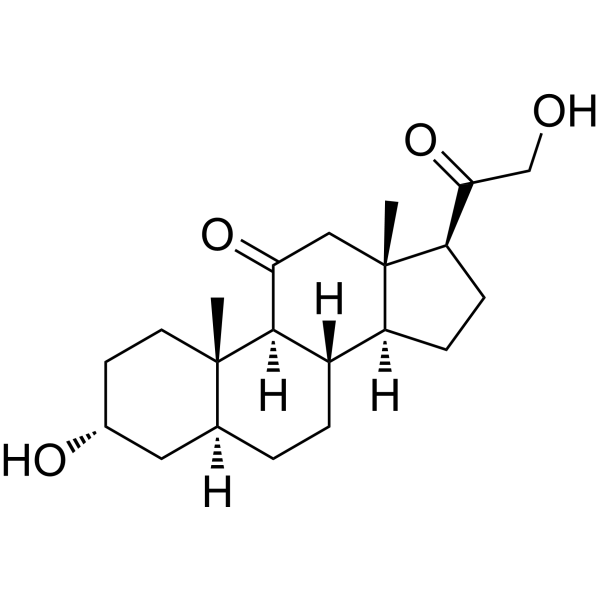
-
- HY-148155
-
-
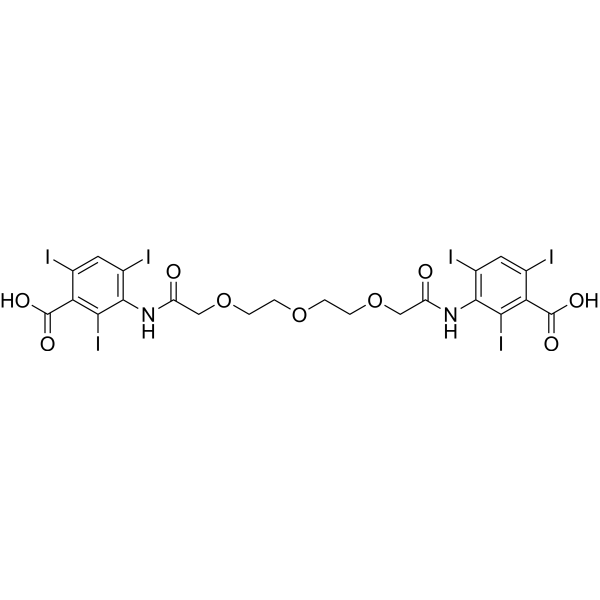
-
- HY-136476A
-
|
|
Biochemical Assay Reagents
|
Others
|
|
Mn(II) protoporphyrin IX is a potential intravenous paramagnetic magnetic resonance contrast agent. Mn(II) protoporphyrin IX maintains strong paramagnetic properties .
|
-
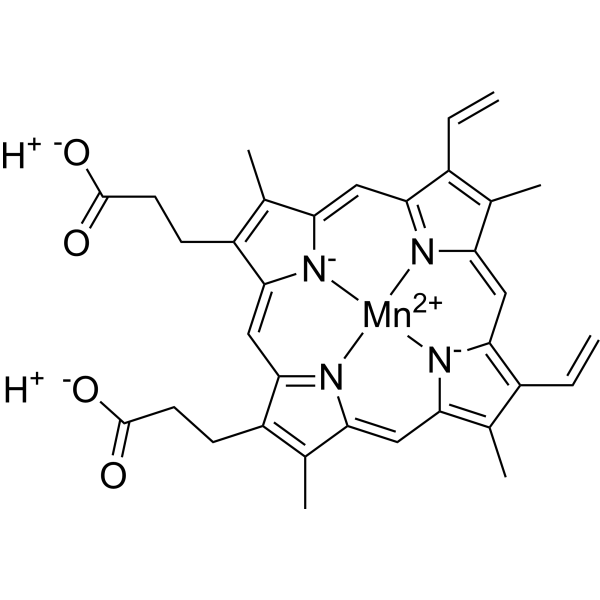
-
- HY-144773A
-
|
HR1405–01
|
COX
|
Inflammation/Immunology
|
|
Loxoprofenol-SRS tromethamine (HR1405-01), an active metabolite of Loxoprofen, is a Safe intravenous non-steroidal anti-inflammatory drug (NSAID) with superior anti-inflammatory and analgesic activities .
|
-
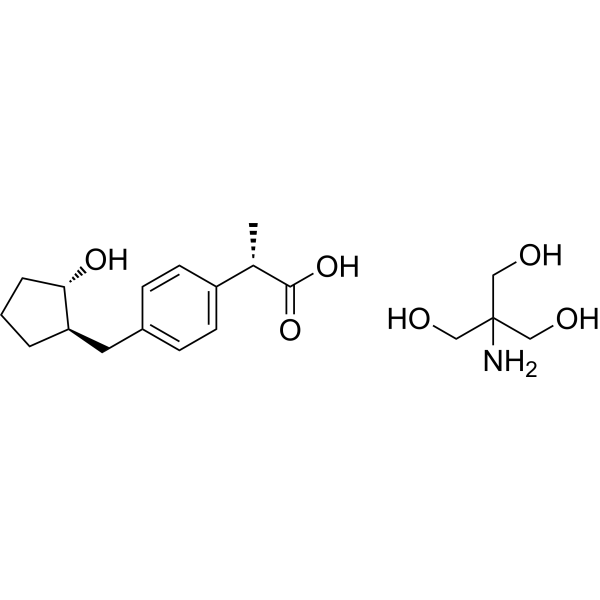
-
- HY-N10225
-
|
|
Prostaglandin Receptor
|
Cardiovascular Disease
Endocrinology
|
|
Thielavin A is an inhibitor of prostaglandin biosynthesis produced by Thielavia terricola. Thielavin A specifically inhibits the conversion of arachidonic acid into prostaglandin H2. Thielavin A has no anti-inflammatory activity on intravenous injection or on oral administration .
|
-

-
- HY-107353
-
|
Gd-DTPA; gadolinium complex
|
Biochemical Assay Reagents
|
Others
|
|
Gadopentetic acid (Gd-DTPA) is a paramagnetic contrast agent. Gadopentetic acid commonly implemented by a bolus intravenous injection in Dynamic contrast-enhanced MRI (DCE-MRI) studies. Gadopentetic acid also can be used for the research of nephrogenic systemic fibrosis (NSF) .
|
-
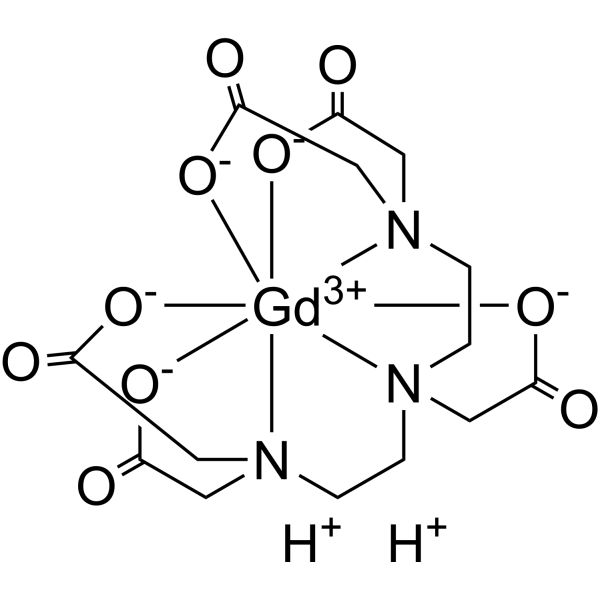
-
- HY-P4154
-
|
ALM-488
|
Fluorescent Dye
|
Neurological Disease
|
|
Bevonescein (ALM-488) is a novel, intravenously-administrated fluorescein-conjugated peptide that binds nerve-associated connective tissue, labels peripheral nerves under real-time fluorescence imaging (FL) in living mice and human ex vivo nerve tissue. Bevonescein is a peptide-linked tracer which fluorescently labeled both intact and degenerated nerves .
|
-
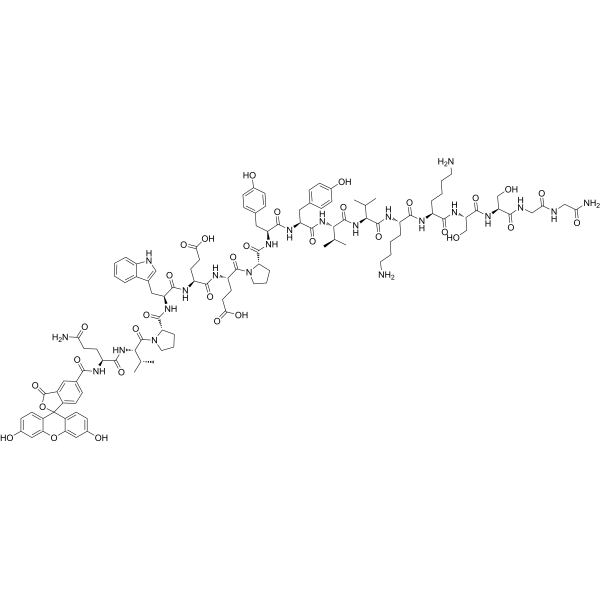
-
- HY-B1657
-
|
|
Others
|
Neurological Disease
|
|
Fosphenytoin is a phosphate ester proagent developed as an alternative to intravenous phenytoin for acute intervention of seizures. Fosphenytoin has advantages including more convenient and rapid intravenous administration, availability for intramuscular injection, and low potential for adverse local reactions at injection sites .
|
-
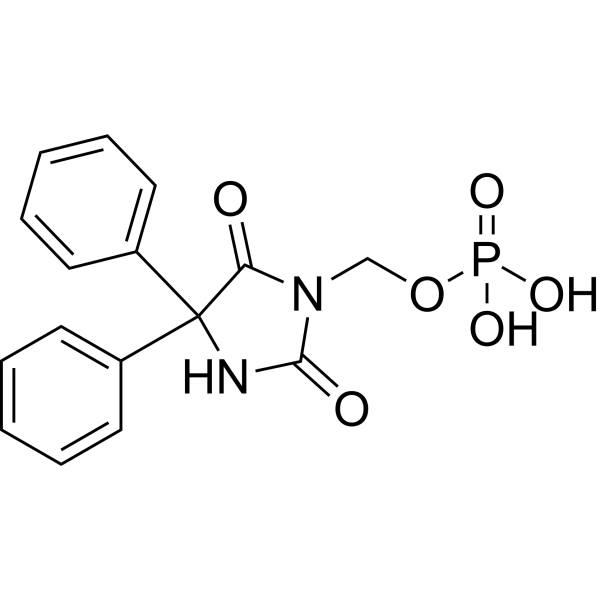
-
- HY-B1297
-
|
|
|
|
|
Ceforanide is a second generation cephalosporin administered intravenously or intramuscularly. Ceforanide has a spectrum of in vitro antibacterial activity .
|
-
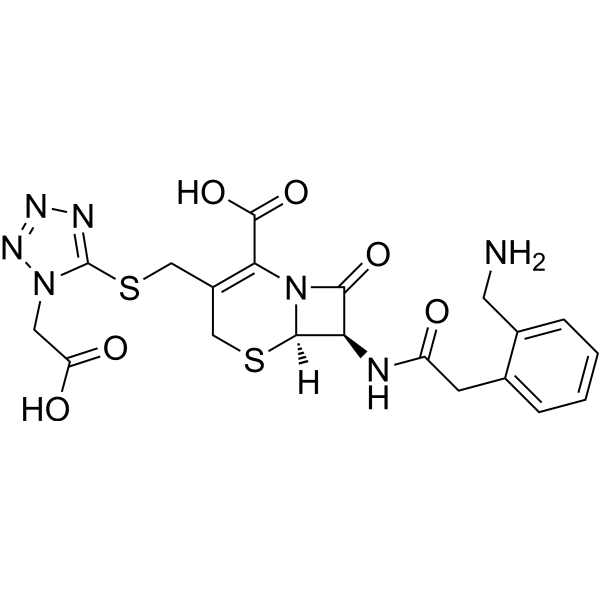
-
- HY-P3854
-
|
|
Neurokinin Receptor
|
Neurological Disease
|
|
GR 83074 is a potent and selective NK-2 (Neurokinin Receptor) antagonist with a pKB of 8.23. GR 83074 is inactive as an NK-3 antagonist and exhibits a 340-fold NK-2/NK-1 selectivity .
|
-
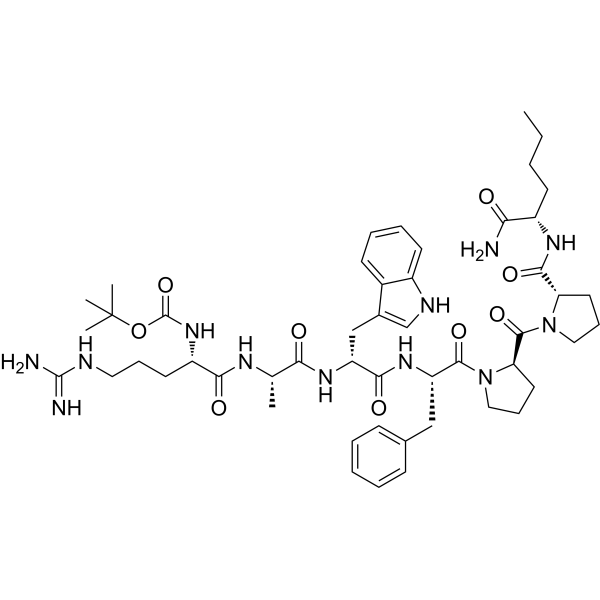
-
- HY-144773
-
|
|
Drug Metabolite
|
Inflammation/Immunology
|
|
Loxoprofenol-SRS, an active metabolite of Loxoprofen, is a new intravenous NSAID. Loxoprofenol-SRS exhibits significantly stronger anti-inflammatory and analgesic activities .
|
-
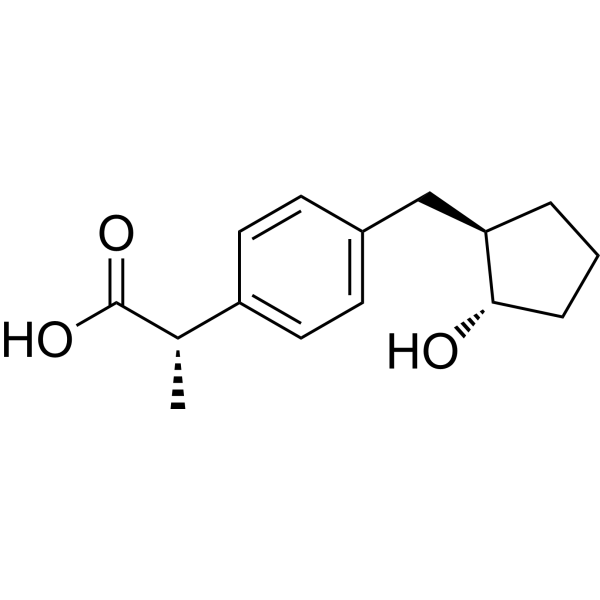
-
- HY-B2068
-
|
Iron saccharate
|
|
|
|
Iron sucrose (Iron saccharate) is a intravenous iron preparation and a pro-oxidant agent. Iron sucrose has the potential for iron deficiency anemia treatment .
|
-
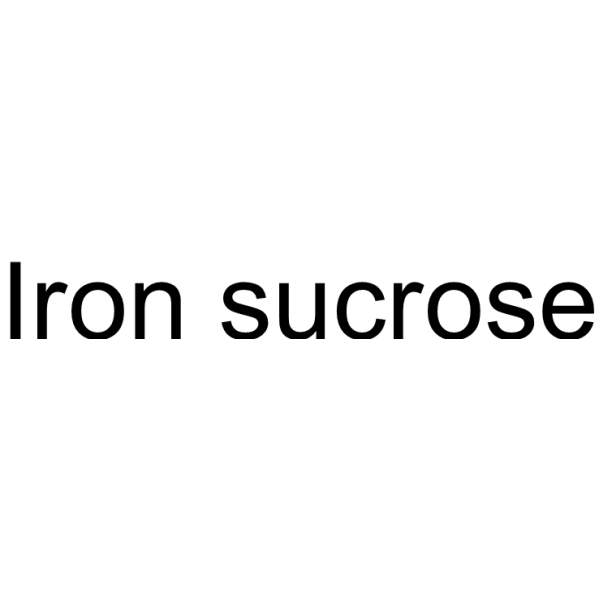
-
- HY-135578
-
|
|
Parasite
|
Infection
|
|
Artelinic acid, a derivative of Artemisinin, is an antimalarial agent for the treatment of multidrug resistant strains of Plasmodium falciparum. Artelinic acid can be administered by various routes of administration, including intravenous, intramuscular and oral routes .
|
-
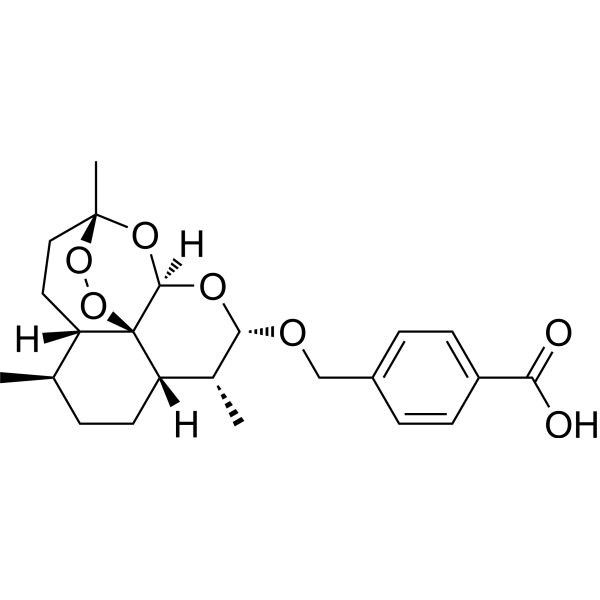
-
- HY-N6910
-
|
|
Others
|
Metabolic Disease
|
|
Pseudolaric Acid C2, a diterpenoid isolated from Pseudolarix kaempferi, is identified as the specific metabolite of Pseudolaric acid B in plasma, urine, bile and feces after both oral and intravenous administration to rats .
|
-
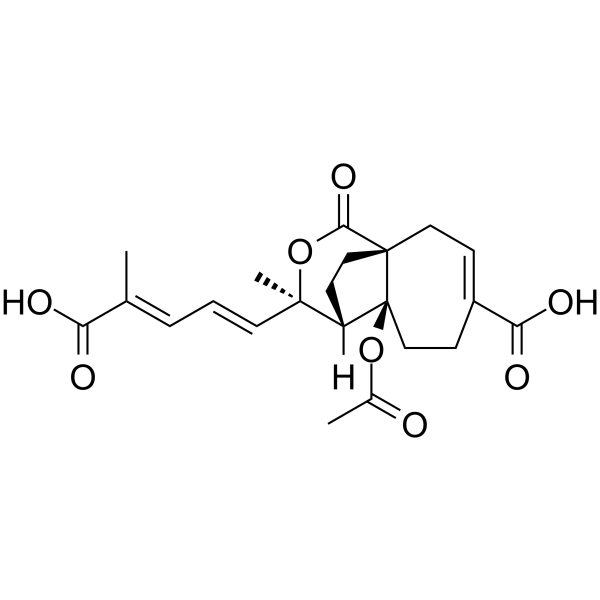
-
- HY-11021
-
|
PRT060128
|
P2Y Receptor
|
Cardiovascular Disease
|
|
Elinogrel (PRT060128) is a potent, direct acting, competitive, and reversible platelet P2Y12 antagonist (IC50=20 nM). It is orally and intravenously available and has potent antiplatelet effects .
|
-
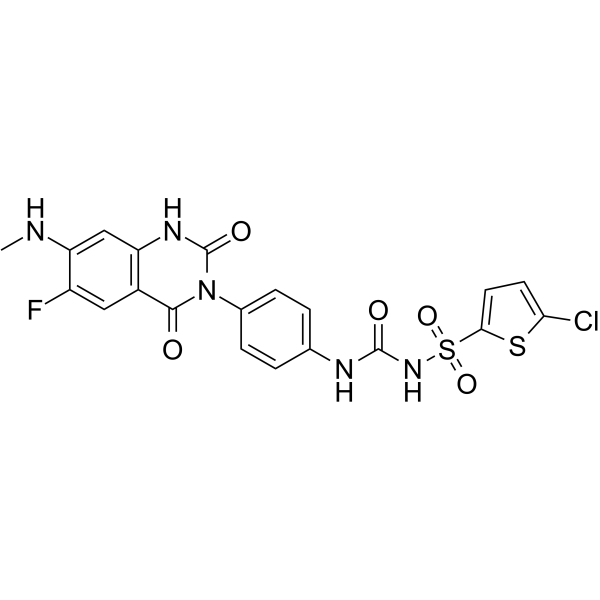
-
- HY-N10226
-
|
|
Prostaglandin Receptor
|
Cardiovascular Disease
Endocrinology
|
|
Thielavin B is an inhibitor of prostaglandin biosynthesis produced by Thielavia terricola. Thielavin B effectively influences the prostaglandin E2 synthesis from the endoperoxide. Thielavin B is significantly effective on carrageenan-induced oedema of rats when administered intravenously .
|
-
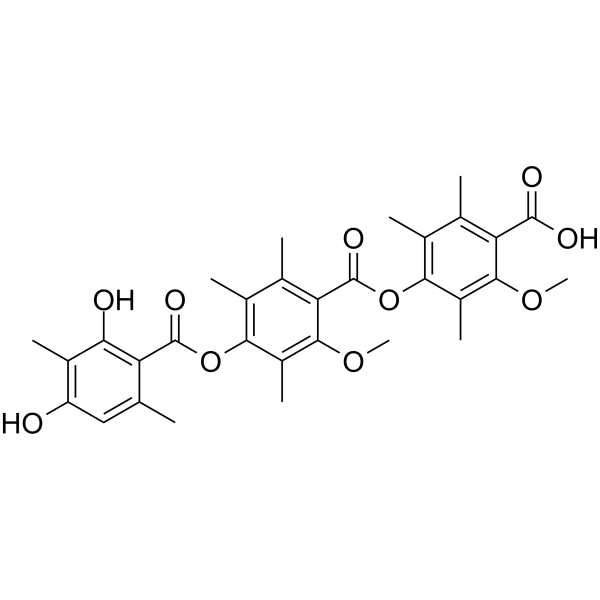
-
- HY-P5889
-
|
|
Thrombin
|
Cardiovascular Disease
|
|
Thrombin receptor peptide ligand is a thrombin receptor antagonist peptide that can be used as an antithrombotic agent .
|
-
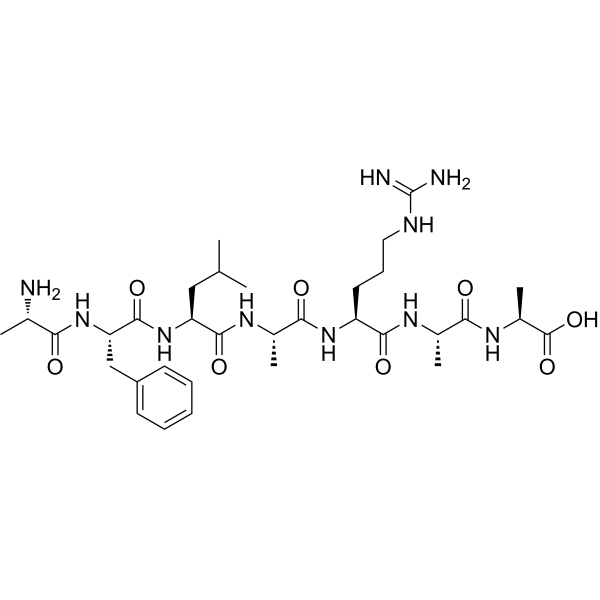
-
- HY-100435
-
|
MCB-3837; DNV3837
|
|
|
|
Oxaquin (MCB-3837) is a injectable proagent that is rapidly converted to the active substance MCB3681 in vivo following intravenous (i.v.) administration, active against Gram-positive bacterial species. Oxaquin (MCB-3837) itself has no antimicrobial effects .
|
-
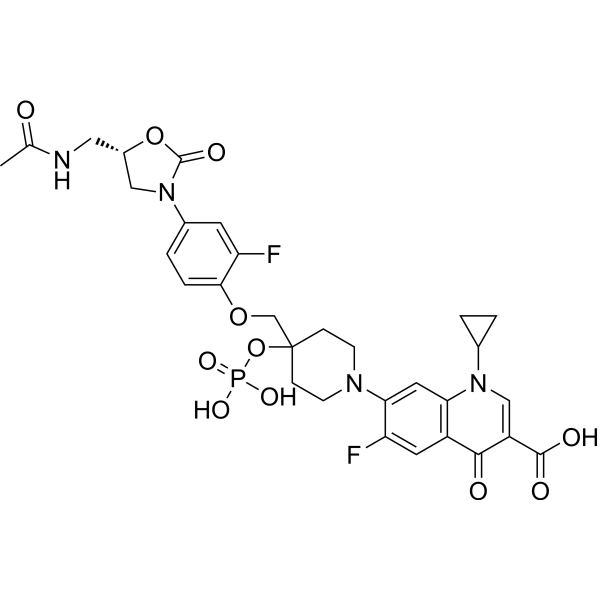
-
- HY-109106A
-
|
|
CaSR
|
Endocrinology
|
|
Upacicalcet sodium is an intravenous calcimimetic agent. Upacicalcet suppresses excessive parathyroid hormone (PTH) secretion, thereby lowering blood PTH levels, by acting directly on parathyroid cell membrane calcium-sensing receptors. Upacicalcet can be used for researching the disease of secondary hyperparathyroidism (SHPT) .
|
-

-
- HY-109106
-
|
|
CaSR
|
Endocrinology
|
|
Upacicalcet is an intravenous calcimimetic agent. Upacicalcet suppresses excessive parathyroid hormone (PTH) secretion, thereby lowering blood PTH levels, by acting directly on parathyroid cell membrane calcium-sensing receptors. Upacicalcet can be used for researching the disease of secondary hyperparathyroidism (SHPT) .
|
-
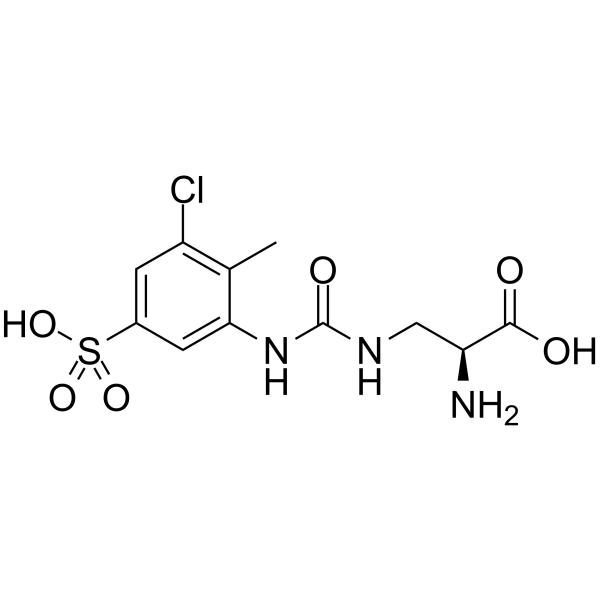
-
- HY-B0302
-
|
Etidronate; HEDPA; HEDP
|
Apoptosis
|
Metabolic Disease
Cancer
|
|
Etidronic acid (Etidronate) is an orally and intravenously active bisphosphonate. Etidronic acid inhibits resorption of bone, reduces arterial calcification and can be used for osteoporosis research. Etidronic acid has anticancer activity. Etidronic acid is a chelating agent and can be used to remove heavy metal in water .
|
-
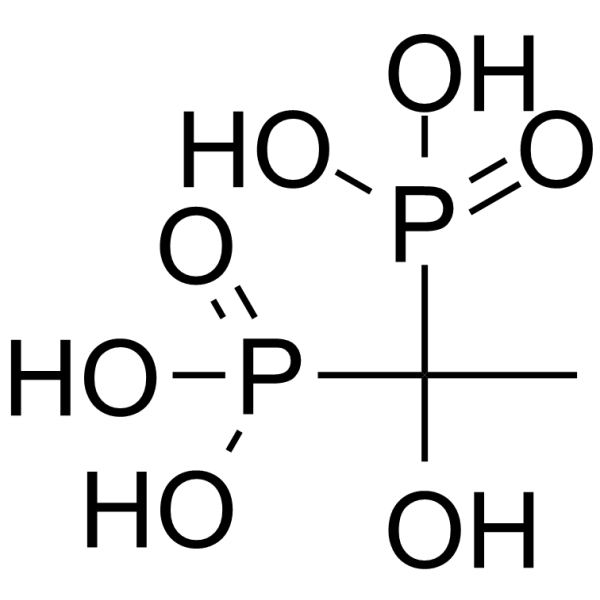
-
- HY-109106B
-
|
|
CaSR
|
Endocrinology
|
|
(Rac)-Upacicalcet is the racemate of Upacicalcet.Upacicalcet is an intravenous calcimimetic agent. Upacicalcet suppresses excessive parathyroid hormone (PTH) secretion, thereby lowering blood PTH levels, by acting directly on parathyroid cell membrane calcium-sensing receptors. Upacicalcet can be used for researching the disease of secondary hyperparathyroidism (SHPT) .
|
-
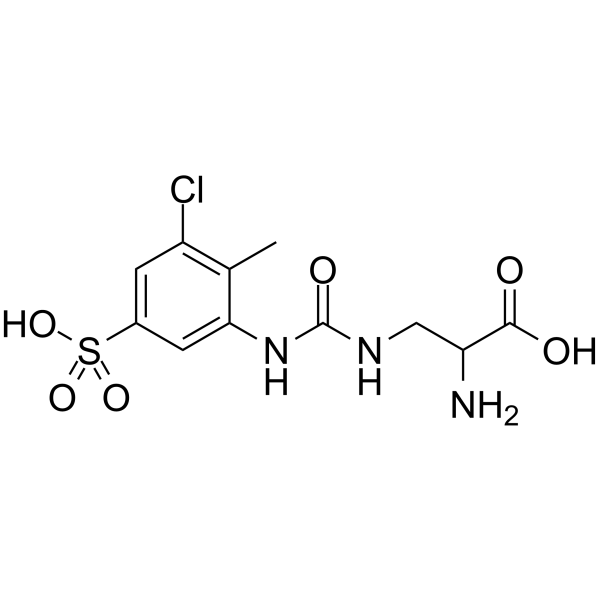
-
- HY-122529
-
|
|
Bacterial
|
Infection
|
|
Almurtide (nor-MDP), a muramyl dipeptide derivative with anti-inflammatory and anti-tumor activity. Almurtide also shows protective effects against intraperitoneal Pseudomonas aeruginosa infection or intravenously Candida albicans infection in mice. Almurtide also inhibits the carcinogenic Friend leukemia virus .
|
-
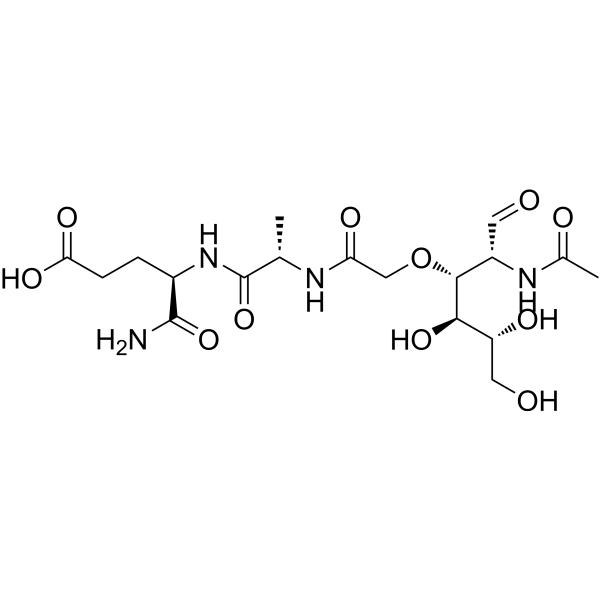
-
- HY-121045
-
|
KO 1366
|
Adrenergic Receptor
|
Cardiovascular Disease
|
|
Bunitrolol is a beta-adrenergic antagonist. Bunitrolol has intrinsic sympathomimetic activity. Bunitrolol can be used for the research of ischemic myocardium .
|
-
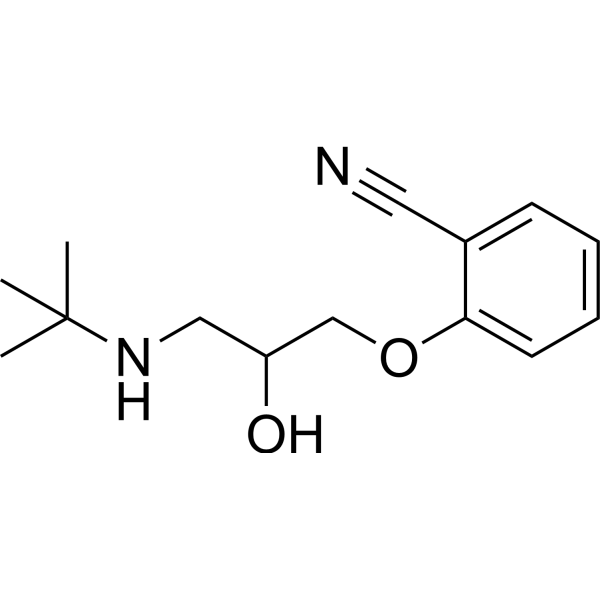
-
- HY-B0302A
-
|
Etidronate disodium; HEDPA disodium; HEDP disodium
|
|
|
|
Etidronic acid (Etidronate) disodium is an orally and intravenously active bisphosphonate. Etidronic acid disodium inhibits resorption of bone, reduces arterial calcification and can be used for osteoporosis research. Etidronic acid disodium has anticancer activity. Etidronic acid disodium is a chelating agent and can be used to remove heavy metal in water .
|
-
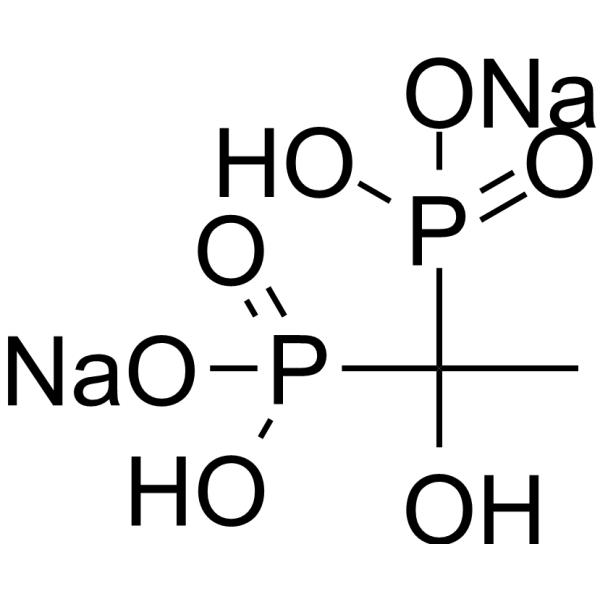
-
- HY-105215
-
|
|
Neurokinin Receptor
|
Inflammation/Immunology
|
|
FK888 is a potent, selective, and high affinity dipeptide NK1 receptor antagonist. FK888 displaces [3H]-SP binding with a Ki value of 0.69 nM and 0.45 microM. FK888 also inhibits SP-induced airway oedema in guinea-pig after both intravenous and oral administration .
|
-
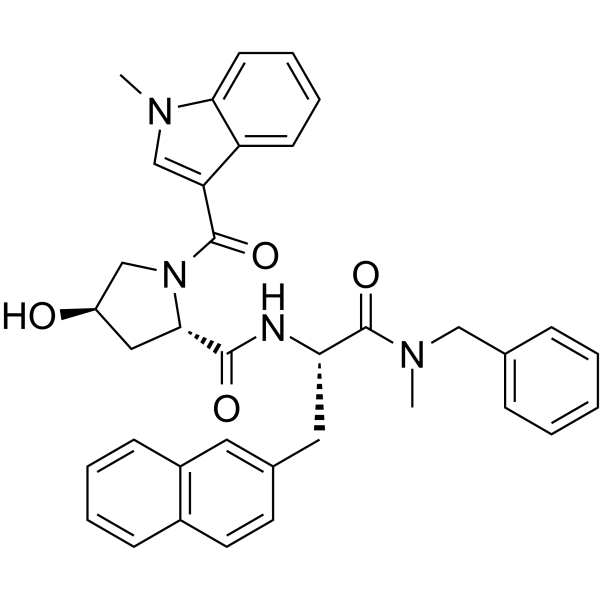
-
- HY-19638
-
|
AR-C69931MX
|
|
|
|
Cangrelor (AR-C69931MX), an adenosine triphosphate analogue, is an intravenous, reversible and selective platelet P2Y12 antagonist, with prompt and potent antiplatelet effects. Cangrelor directly blocks adenosine diphosphate (ADP)-induced activation and aggregation of platelets. Cangrelor is also a nonspecific GPR17 antagonist .
|
-
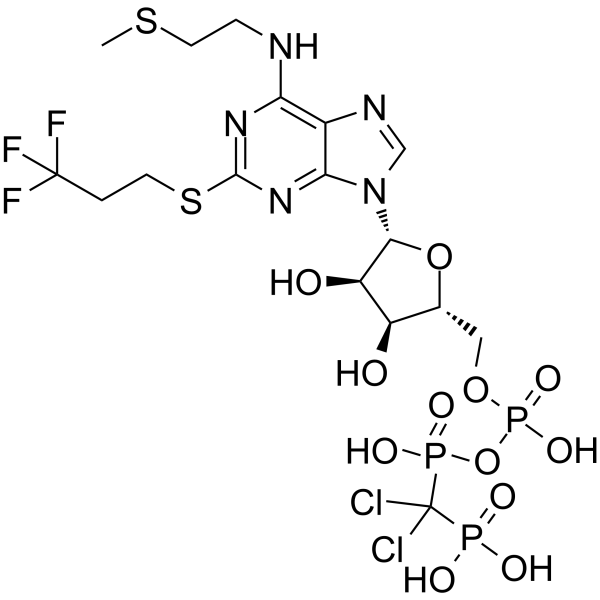
-
- HY-14658B
-
|
(R)-(+)-Thalidomide
|
Others
|
Metabolic Disease
|
|
(R)-Thalidomide ((R)-(+)-Thalidomide) is the R-enantiomer of Thalidomide. (R)-Thalidomide has psychomotor stabilizing properties .
|
-
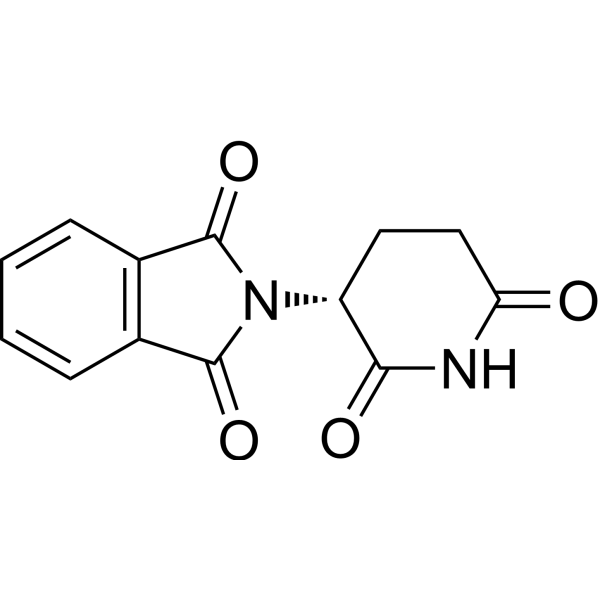
-
- HY-106258
-
|
OHM 11638; BAX-ACC 1638; MOT 288
|
Motilin Receptor
|
Metabolic Disease
|
|
OHM 11638 (Atilmotin), an analogue of the (1-14) fragment of porcine motilin, is a motilin receptor agonist with a pKd of 8.94 for the motilin receptor. OHM 11638 affects esophageal, lower esophageal sphincter (LES), and gastric motility. OHM 11638 increases LES and gastric pressures, OHM 11638 can be used as prokinetic agents .
|
-
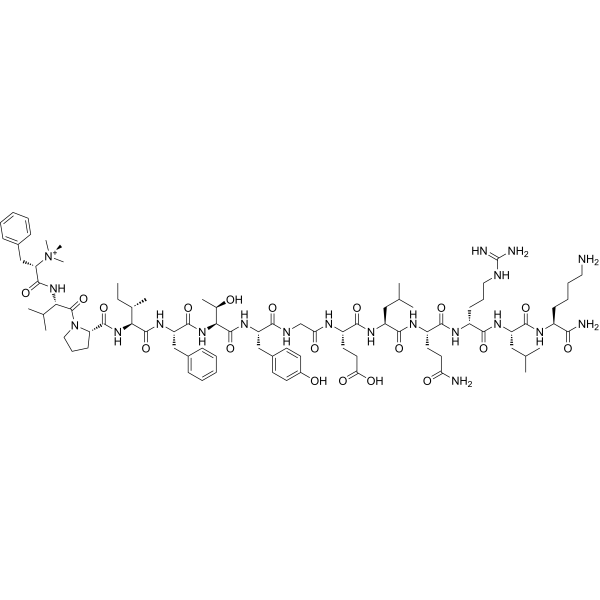
-
- HY-130522
-
|
6β-PGI1
|
Others
|
Others
|
|
6β-Prostaglandin I1 (6β-PGI1) is an analog of prostaglandin I2 (PGI2) that is resistant to hydrolysis in aqueous solutions. 6β-Prostaglandin I1 can reduce gastric acid secretion with an ID50 (dose causing 50% inhibition) of approximately 3.0 μg/kg/min (intravenous injection) .
|
-
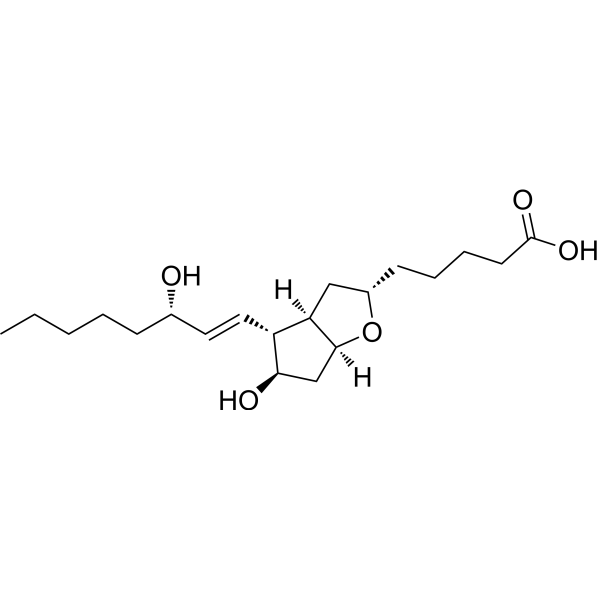
-
- HY-137500
-
|
|
Liposome
|
Neurological Disease
|
|
NT1-014B is a potent NT1-lipidoid encapsulated AmB (amphotericin B). NT1-014B dopes the NT-lipidoids into BBB-impermeable lipid nanoparticles (LNPs) gave the LNPs the ability to cross the BBB. NT1-014B enhances brain delivery through intravenous injection .
|
-
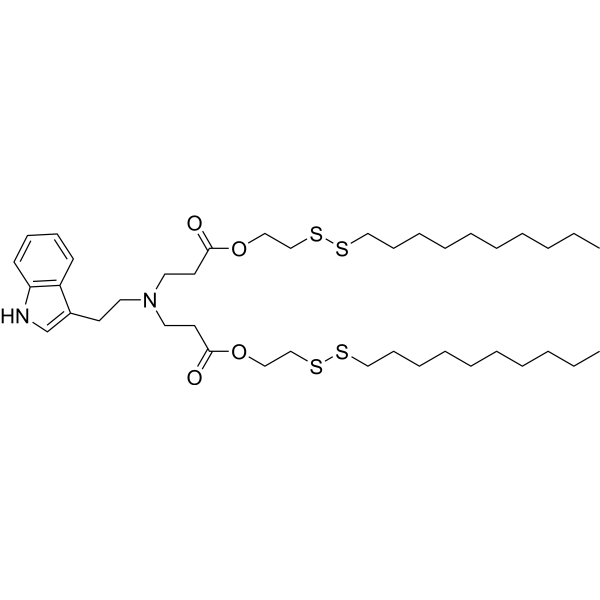
-
- HY-19638A
-
|
AR-C69931MX tetrasodium
|
P2Y Receptor
|
Cardiovascular Disease
Inflammation/Immunology
|
|
Cangrelor tetrasodium, an adenosine triphosphate analogue, is a reversible and selective platelet P2Y12 antagonist, with prompt and potent antiplatelet effects. Cangrelor tetrasodium directly blocks adenosine diphosphate (ADP)-induced activation and aggregation of platelets. Cangrelor tetrasodium is also a nonspecific GPR17 antagonist .
|
-

-
- HY-112624B
-
|
|
Biochemical Assay Reagents
|
Others
|
|
Dextran (MW 70000) is a complex carbohydrate polymer consisting of glucose molecules linked by glycosidic bonds. Dextran has excellent solubility in water, making it useful as a viscosity modifier or stabilizer in foods, paints and adhesives. In the biomedical field, dextran is often used as a plasma expander because of its ability to increase blood volume when administered intravenously. It can also be modified to create dextran-based drug delivery systems, such as targeted nanoparticles.
|
-
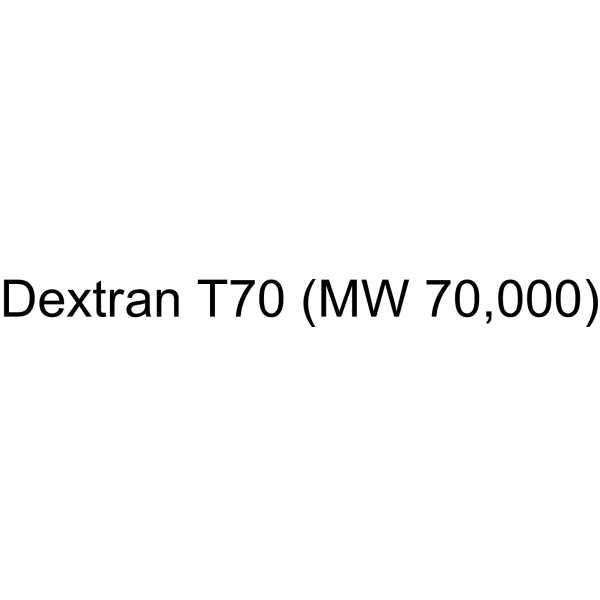
-
- HY-112624C
-
|
|
Biochemical Assay Reagents
Endogenous Metabolite
|
Others
|
|
Dextran (MW 40000) is a complex carbohydrate polymer consisting of glucose molecules linked by glycosidic bonds. Dextran has excellent solubility in water, making it useful as a viscosity modifier or stabilizer in foods, paints and adhesives. In the biomedical field, dextran is often used as a plasma expander because of its ability to increase blood volume when administered intravenously. It can also be modified to create dextran-based drug delivery systems, such as targeted nanoparticles.
|
-
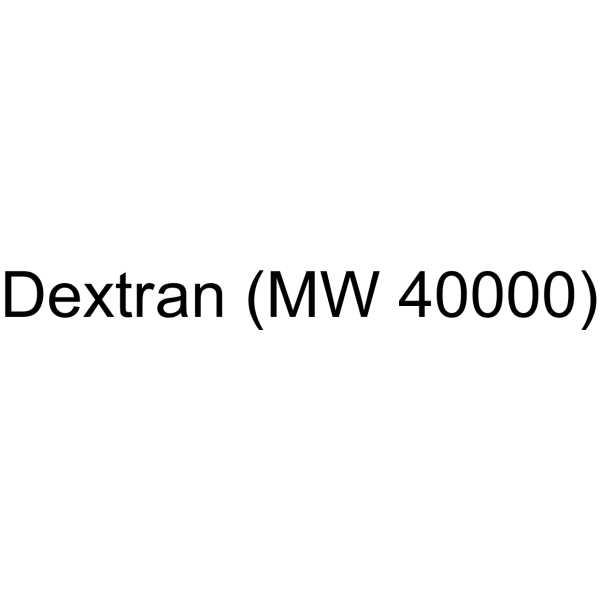
-
- HY-15346
-
Copanlisib
Maximum Cited Publications
21 Publications Verification
BAY 80-6946
|
PI3K
Apoptosis
|
Cancer
|
|
Copanlisib (BAY 80-6946) is a potent, selective and ATP-competitive pan-class I PI3K inhibitor, with IC50s of 0.5 nM, 0.7 nM, 3.7 nM and 6.4 nM for PI3Kα, PI3Kδ, PI3Kβ and PI3Kγ, respectively. Copanlisib has more than 2,000-fold selectivity against other lipid and protein kinases, except for mTOR. Copanlisib has superior antitumor activity .
|
-
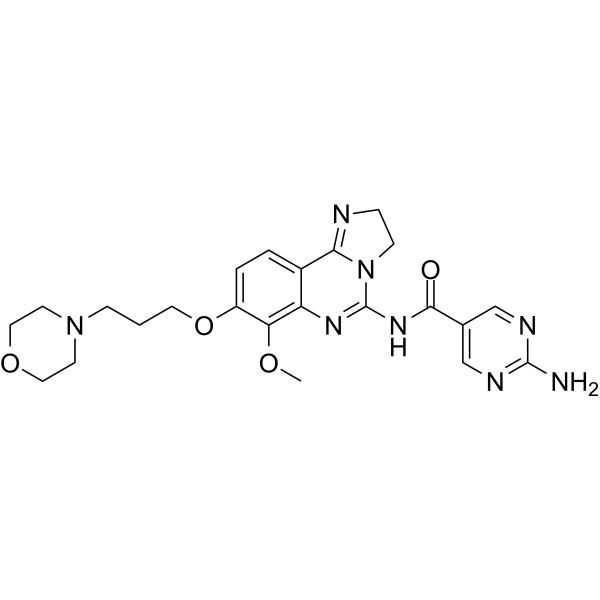
-
- HY-14658A
-
|
(S)-(-)-Thalidomide
|
Apoptosis
Molecular Glues
|
Metabolic Disease
Inflammation/Immunology
|
|
(S)-Thalidomide ((S)-(-)-Thalidomide) is the S-enantiomer of Thalidomide. (S)-Thalidomide has immunomodulatory, anti-inflammatory, antiangiogenic and pro-apoptotic effects . (S)-Thalidomide induces teratogenic effects by binding to cereblon (CRBN) .
|
-
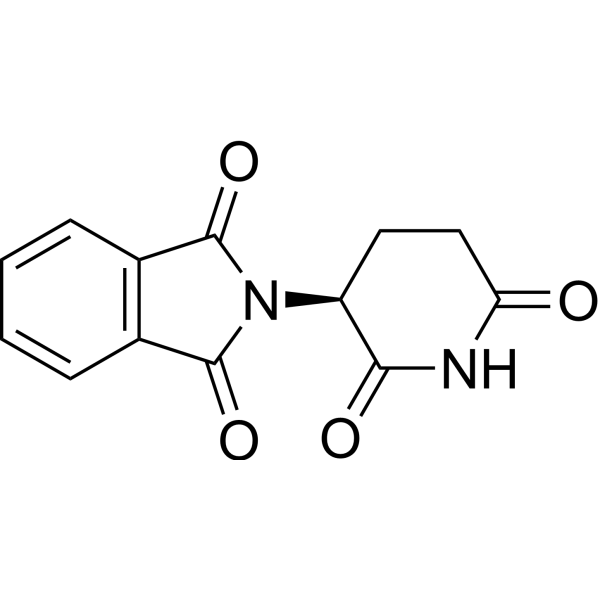
-
- HY-15346A
-
|
BAY 80-6946 dihydrochloride
|
PI3K
Apoptosis
|
Cancer
|
|
Copanlisib dihydrochloride (BAY 80-6946 dihydrochloride) is a potent, selective and ATP-competitive pan-class I PI3K inhibitor, with IC50s of 0.5 nM, 0.7 nM, 3.7 nM and 6.4 nM for PI3Kα, PI3Kδ, PI3Kβ and PI3Kγ, respectively. Copanlisib dihydrochloride has more than 2,000-fold selectivity against other lipid and protein kinases, except for mTOR. Copanlisib dihydrochloride has superior antitumor activity .
|
-
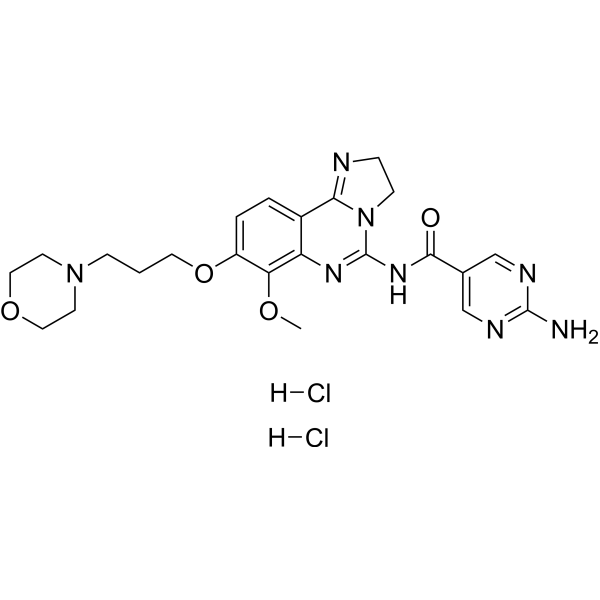
-
- HY-109513
-
|
|
Biochemical Assay Reagents
|
Others
|
|
Ioxilan is a low-osmolar, nonionic and tri-iodinated diagnostic contrast agent. Ioxilan is also an X-ray contrast agent for excretory urography and contrast enhanced computed tomographic (CECT) imaging of the head and body. Intravascular injection results in opacification of vessels in the path of flow of the contrast medium, permitting radiographic visualization of the internal structures of the human body until significant hemodilution occurs .
|
-
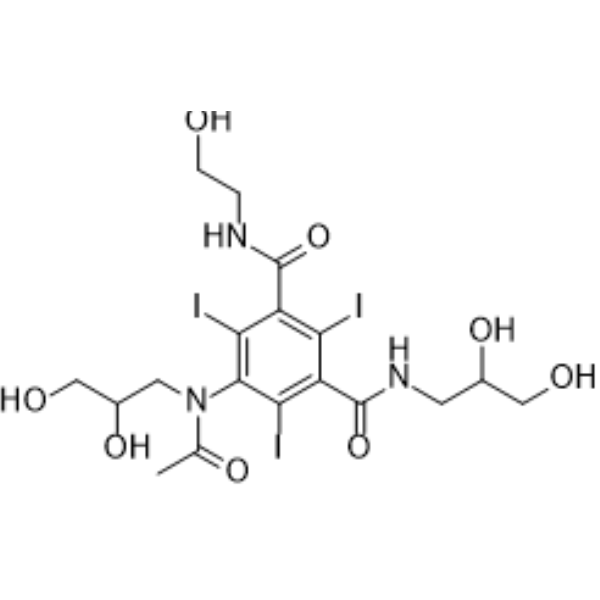
-
- HY-B2227B
-
|
Lactic acid sodium
|
Others
|
Metabolic Disease
|
|
Lactate (Lactic acid) sodium is the product of glycogenolysis and glycolysis . Lactate (Lactic acid) sodium is an organic salt that is mainly used as a buffer and pH adjuster for injection solutions. Lactate sodium can be metabolized by the body into sodium bicarbonate, which in turn acts to increase the pH of the blood. Lactate sodium is used to improve metabolic acidosis and hypovolemic states. In terms of pharmaceutical preparations, Lactate sodium is often used in combination with sodium chloride, glucose, etc. to form normal saline or compound liquid intravenous injection . Lactate sodium also has antimicrobial activity, which can be used as a food preservative .
|
-

-
- HY-115400
-
1V209
2 Publications Verification
TLR7 agonist T7
|
Toll-like Receptor (TLR)
|
Cancer
|
|
1V209 (TLR7 agonist T7) is a Toll-like receptor 7 (TLR7) agonist and has anti-tumor effects. 1V209 can be conjugated with various polysaccharides to improve its water solubility, and enhance its efficacy, and maintain low toxicity .
|
-

-
- HY-P0093
-
|
Cholecystokinin octapeptide; CCK-8; SQ19844
|
|
|
|
Sincalide (Cholecystokinin octapeptide, CCK‐8) is a rapid-acting amino acid polypeptide hormone analogue of cholecystokinin (CCK) for intravenous use in postevacuation cholecystography. CCK‐8 is a major bioactive segment of CCK that retains most of the biological activities of CCK. CCK‐8 can promote gallbladder contraction by injection and helps diagnose gallbladder and pancreas disorders. CCK‐8 can increase bile secretion, cause the gallbladder to contract and relax the sphincter of Oddi, resulting in bile drainage into the duodenum. CCK‐8 is a major bioactive segment of CCK that retains most of the biological activities of CCK .
|
-

-
- HY-P0093A
-
|
Cholecystokinin octapeptide ammonium; CCK-8 ammonium; SQ19844 ammonium
|
Cholecystokinin Receptor
Apoptosis
PI3K
Akt
|
Infection
Cancer
|
|
Sincalide ammonium (Cholecystokinin octapeptide ammonium, CCK-8 ammonium) is a rapid-acting amino acid polypeptide hormone analogue of cholecystokinin (CCK) for intravenous use in postevacuation cholecystography. Sincalide ammonium is a major bioactive segment of CCK that retains most of the biological activities of CCK. CCK‐8 can promote gallbladder contraction by injection and helps diagnose gallbladder and pancreas disorders. Sincalide ammonium can increase bile secretion, cause the gallbladder to contract and relax the sphincter of Oddi, resulting in bile drainage into the duodenum. Sincalide ammonium is a major bioactive segment of CCK that retains most of the biological activities of CCK .
|
-

-
- HY-163345
-
|
|
5-HT Receptor
|
Neurological Disease
|
5-HT7R antagonist 2 (compound 4h) is a 5-HT7R antagonist that antagonizes the G protein and β-arrestin signaling pathways, with a Ki of 67 nM, the IC50 values in cAMP and Tango tests were 2.59 μM and 39.57 μM, respectively. 5-HT7R antagonist 2 has an effect on neurogenesis and can reduce repetitive behaviors related to autism spectrum disorder (ASD) and restore neurogenesis of ASD impairment .
Pharmacokinetic Analysis ICR Male Mice
药代动力学分析
| Plasma |
Intravenous Administration |
Intraperitoneal Administration |
| Tmax (h) |
0.08 |
0.25 |
| T1/2 (h) |
0.77 |
1.06 |
| Cmax (ng/mL) |
33.07 |
156.44 |
| AUClast (ng·h/mL) |
28.31 |
143.27 |
| CL (L/h/kg) |
41.61 |
- |
| Vss (L/kg) |
32.43 |
- |
| MRT (h) |
0.79 |
0.93 |
| F (%) |
50.60 |
|
|
-
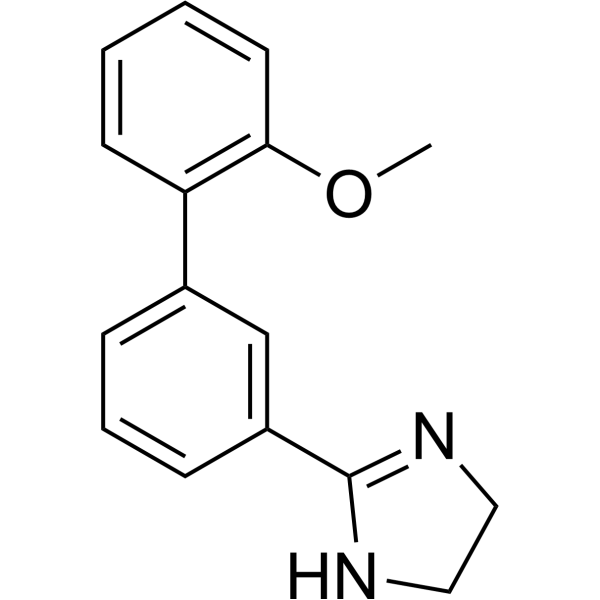
| Cat. No. |
Product Name |
Type |
-
- HY-137500
-
|
|
Drug Delivery
|
|
NT1-014B is a potent NT1-lipidoid encapsulated AmB (amphotericin B). NT1-014B dopes the NT-lipidoids into BBB-impermeable lipid nanoparticles (LNPs) gave the LNPs the ability to cross the BBB. NT1-014B enhances brain delivery through intravenous injection .
|
-
- HY-112624B
-
|
|
Drug Delivery
|
|
Dextran (MW 70000) is a complex carbohydrate polymer consisting of glucose molecules linked by glycosidic bonds. Dextran has excellent solubility in water, making it useful as a viscosity modifier or stabilizer in foods, paints and adhesives. In the biomedical field, dextran is often used as a plasma expander because of its ability to increase blood volume when administered intravenously. It can also be modified to create dextran-based drug delivery systems, such as targeted nanoparticles.
|
| Cat. No. |
Product Name |
Target |
Research Area |
-
- HY-P4154
-
|
ALM-488
|
Fluorescent Dye
|
Neurological Disease
|
|
Bevonescein (ALM-488) is a novel, intravenously-administrated fluorescein-conjugated peptide that binds nerve-associated connective tissue, labels peripheral nerves under real-time fluorescence imaging (FL) in living mice and human ex vivo nerve tissue. Bevonescein is a peptide-linked tracer which fluorescently labeled both intact and degenerated nerves .
|
-
- HY-P0093A
-
|
Cholecystokinin octapeptide ammonium; CCK-8 ammonium; SQ19844 ammonium
|
Cholecystokinin Receptor
Apoptosis
PI3K
Akt
|
Infection
Cancer
|
|
Sincalide ammonium (Cholecystokinin octapeptide ammonium, CCK-8 ammonium) is a rapid-acting amino acid polypeptide hormone analogue of cholecystokinin (CCK) for intravenous use in postevacuation cholecystography. Sincalide ammonium is a major bioactive segment of CCK that retains most of the biological activities of CCK. CCK‐8 can promote gallbladder contraction by injection and helps diagnose gallbladder and pancreas disorders. Sincalide ammonium can increase bile secretion, cause the gallbladder to contract and relax the sphincter of Oddi, resulting in bile drainage into the duodenum. Sincalide ammonium is a major bioactive segment of CCK that retains most of the biological activities of CCK .
|
-
- HY-P3854
-
|
|
Neurokinin Receptor
|
Neurological Disease
|
|
GR 83074 is a potent and selective NK-2 (Neurokinin Receptor) antagonist with a pKB of 8.23. GR 83074 is inactive as an NK-3 antagonist and exhibits a 340-fold NK-2/NK-1 selectivity .
|
-
- HY-P5889
-
|
|
Thrombin
|
Cardiovascular Disease
|
|
Thrombin receptor peptide ligand is a thrombin receptor antagonist peptide that can be used as an antithrombotic agent .
|
-
- HY-106258
-
|
OHM 11638; BAX-ACC 1638; MOT 288
|
Motilin Receptor
|
Metabolic Disease
|
|
OHM 11638 (Atilmotin), an analogue of the (1-14) fragment of porcine motilin, is a motilin receptor agonist with a pKd of 8.94 for the motilin receptor. OHM 11638 affects esophageal, lower esophageal sphincter (LES), and gastric motility. OHM 11638 increases LES and gastric pressures, OHM 11638 can be used as prokinetic agents .
|
| Cat. No. |
Product Name |
Category |
Target |
Chemical Structure |
Your information is safe with us. * Required Fields.
Inquiry Information
- Product Name:
- Cat. No.:
- Quantity:
- MCE Japan Authorized Agent:



















































